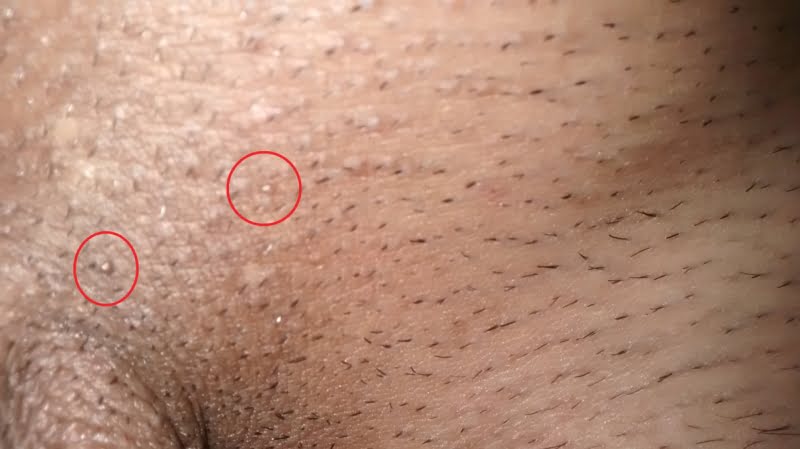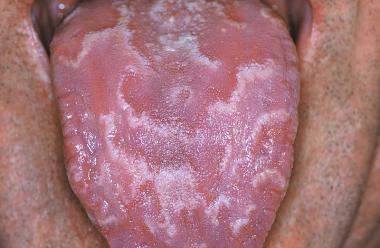Genital warts are small and fleshy growths but also they can be bumps or skin changes which are appearing on or around the genital or anal area. This condition is very common. In England, this is the second most common type of STI (sexually transmitted infection) after Chlamydia [1]. They are the result of a viral skin infection which is caused by the HPV (human papilloma virus). Usually they are painless and they do not pose a serious threat to health. They are unpleasant to look at. Also they can cause psychological distress. The human papilloma virus is not a single virus [2]. This is a family of more than 100 different strains of viruses. Different strains usually are affecting different parts of the body which are including feet or hands. There are around thirty different types of HPV and they can affect the genital skin. In the most cases when people are having infection with HPV, there are not visible symptoms. The types of HPV which are causing visible genital warts are not causing genital cancer. There are other strains of HPV which can lead to cervical cancer. Genital warts can spread through vaginal or anal sex but also they can spread by sharing sex toys. It can take months or even years for genital warts to develop after infection with this virus. There are some people who have only one episode of genital warts but for other people they can come back after weeks, months or years.
Symptoms of genital warts
There are many people who have HPV infection and they will not develop any visible genital wart. If they appear, then it can be several weeks, months or even years after you first came into contact with this virus. The genital warts are small and fleshy growths, bumps or skin changes which can appear on your genitals or around the anus. In some cases, the genital warts are so small and they are difficult to notice. Some person can have a single wart or clusters of multiple warts which grow together from a kind of cauliflower appearance.
- Warts in men: The most common places for the genital warts to develop in men are:
- On the upper thighs
- Around or inside the anus
- Inside the urethra (tube where urine comes out)
- On the scrotum
- Anywhere on the penis
- Warts in women: The most common places for genital warts to develop in women are:
- On the upper thighs
- Around or inside the anus
- Inside the vagina
- On the cervix (the neck of the womb)
- Around the vulva (the opening of the vagina)
Other symptoms: Genital warts are usually painless but on some people they can become infected and itchy. If the genital wart becomes inflamed, then it can lead to bleeding from the urethra, vagina or anus. The urethra is the tube which is connected to your bladder and which urine passes through. Genital warts develop near or inside the urethra and they can also disrupt the normal flow of urine.

Causes of genital warts
This infection is caused by the HPV. This is not a single virus. It is a family which has more than 100 different strains of viruses. But in the most cases the genital warts are caused by two strains of the virus type six and type eleven. In the most cases of HPV infection there are not visible symptoms but there are so many people who can be infected with this virus without realizing. If the genital warts are not currently visible, it is still possible to pass on genital warts.
HPV transmission: It is known that this virus can be passed from person to person through skin to skin contact. [3] This is usually sexual activity such as:
- Sharing sex toys [4]
- Non – penetrative genital to genital contact
- Anal sex
- Vaginal sex
- In very rare cases it can be caused by oral sex
This virus is not passed on through hugging, kissing, sharing clothing, towels or everyday items such as toilet seat or cutlery. A condom is a very practical protection against genital warts. But it does not cover all of your genital area and it is still possible to pass human papilloma virus on uncovered areas of your skin. In some rare cases, a mother can pass this virus to her newborn baby during birth [5]. Also in some very rare cases, some person who has HPV warts on their hands could pass on an genital warts infection by touching somebody else’s genitals.
References:
[1] Waters L. Putting the rise of STIs in England into context. The Pharmaceutical Journal. 2017. Retrieved from www.pharmaceutical-journal.com/news-and-analysis/opinion/insight/putting-the-rise-of-stis-in-england-into-context/20203373.article?firstPass=false
[2] Lawrence S, Walzman M, Sheppard S, et al. The psychological impact caused by genital warts: has the Department of Health’s choice of vaccination missed the opportunity to prevent such morbidity? International Journal of STD & AIDS. 2009. Retrieved from journals.sagepub.com/doi/abs/10.1258/ijsa.2009.009120
[3] Watson RA. Human papillomavirus: Confronting the epidemic—A urologist’s perspective. Reviews in Urology. 2005;7(3):135–44.
[4] Batteiger T, Schick V, Herbenick D, et al. A study of human papillomavirus on vaginally inserted sex toys, before and after cleaning, among women who have sex with women and men. Sexually Transmitted Infections. 2014;90(7).
[5] Rombaldi RL, Serafini EP, Mandelli J, et al. Perinatal transmission of human papilomavirus DNA. Virology Journal. 2009;6.





Very Nice..
Very Nice.
[…] pain or burning sensation in some cases, most often related to eating spicy or acidic […]